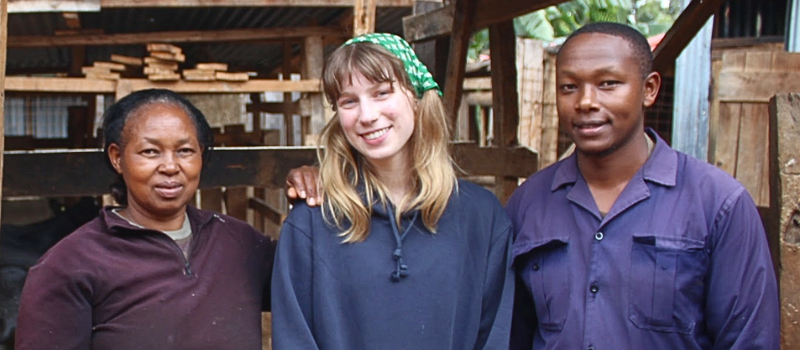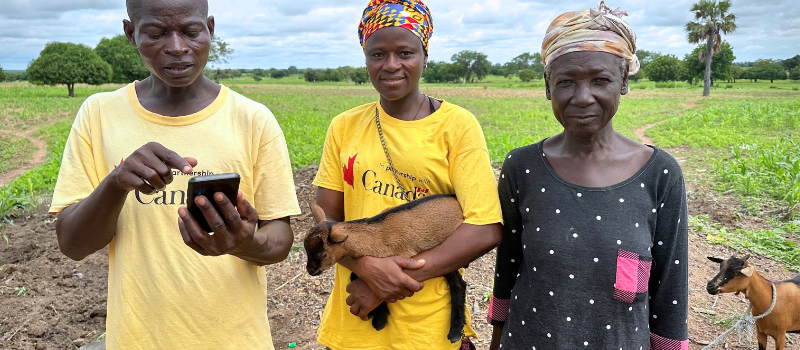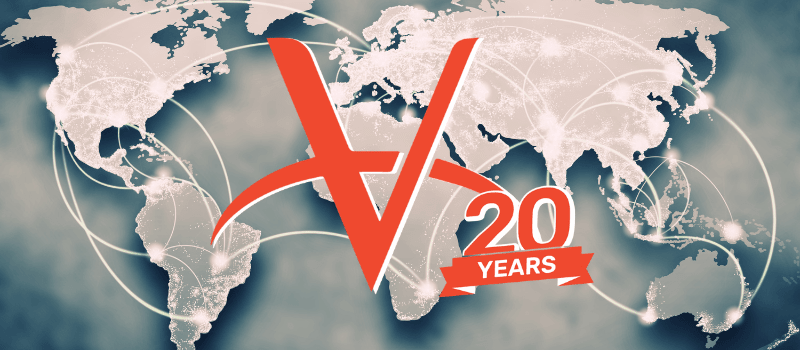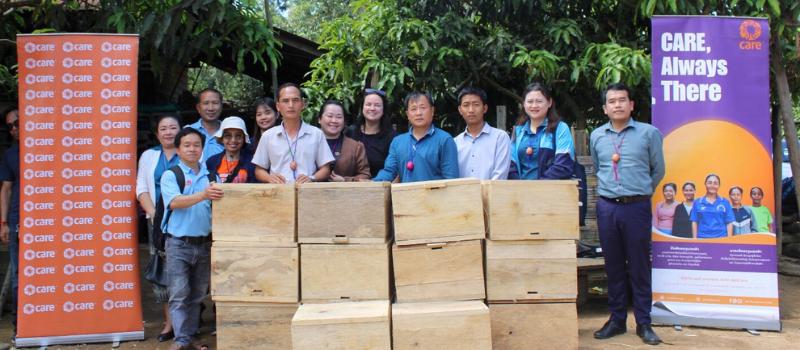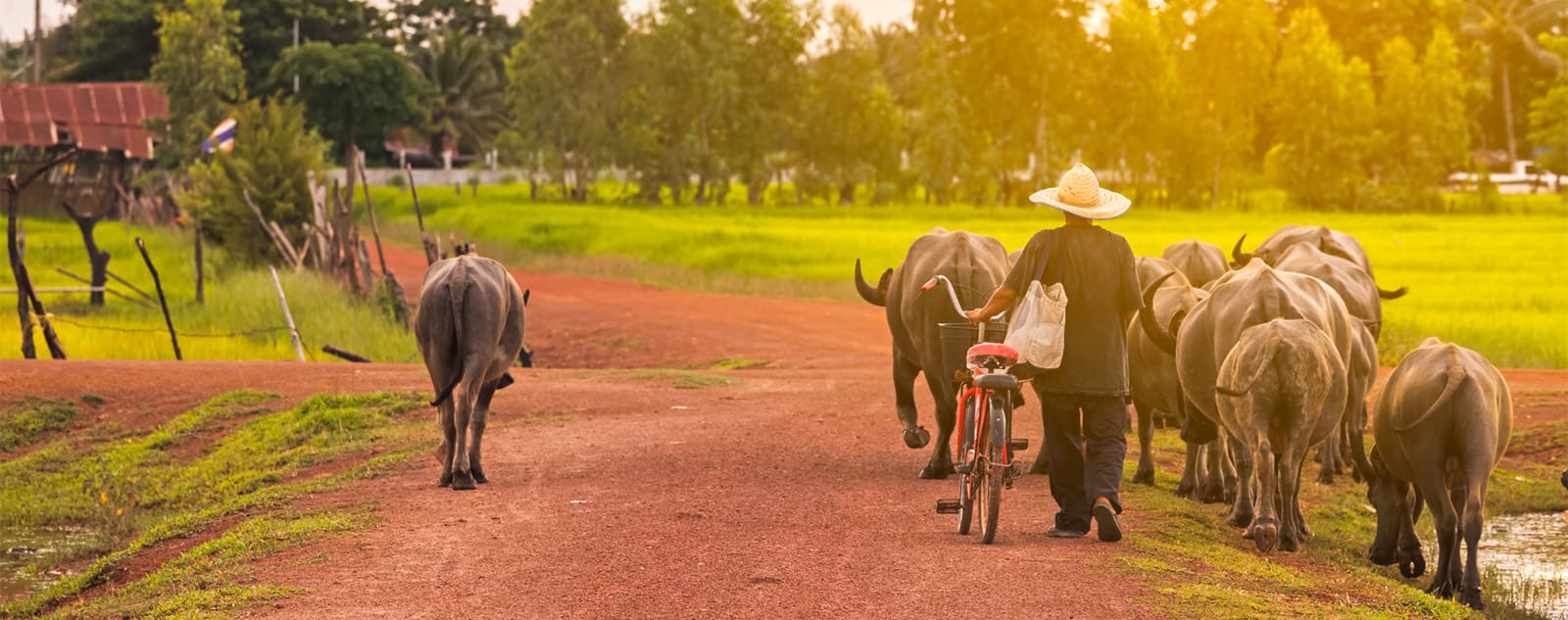#VETSVolunteerVoices brings you stories of our passionate VETS program volunteers from the field. Meet Grace Friesen, an Animal Health Advisor who spent three months in Kenya (May–August 2025) with our local partner, Meru Dairy, helping farmers improve herd health and milk production while learning firsthand how knowledge exchange can strengthen entire communities.
Prairie Roots and Global Dreams
When I first discovered Veterinarians Without Borders’ VETS program, it felt like everything I’d been working toward came together at once. Ever since I was little, I’d dreamed of two things: becoming a veterinarian and seeing more of the world. Growing up on a beef farm in Manitoba, I learned early on how closely livelihoods depend on healthy animals. Later, studying Animal Science and beginning veterinary school, I found myself wondering how I could connect these passions in a meaningful way. The VETS program in Kenya turned out to be the perfect answer.
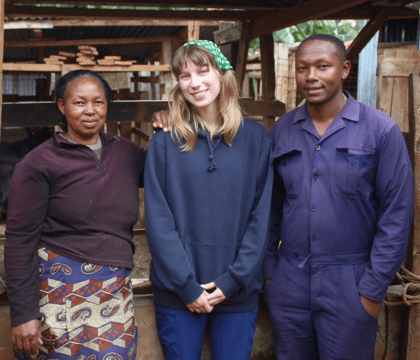 PHOTO: Grace on a farm visit in Meru County.
PHOTO: Grace on a farm visit in Meru County.
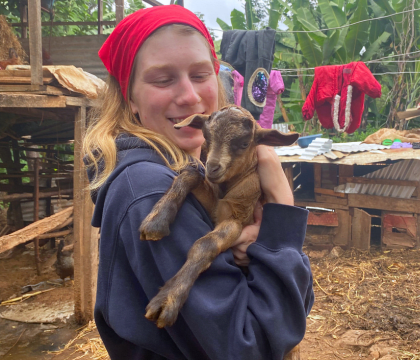 PHOTO: Grace cuddles a goat on a farm visit.
PHOTO: Grace cuddles a goat on a farm visit.
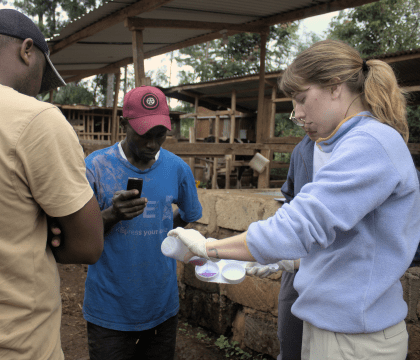 PHOTO: Grace demonstrates mastitis testing for farmers.
PHOTO: Grace demonstrates mastitis testing for farmers.
From the Classroom to the Cowshed
In May 2025, I travelled to Meru County, a lush, hilly region on the northeastern slopes of Mount Kenya, to volunteer as an Animal Health Advisor with Meru Dairy Union. Together with my fellow volunteer, Méli-Jade Léveillé-Blais, our focus was to strengthen animal health and milk production while supporting local women farmers.
Over the course of three months, we led farmer trainings, visited hundreds of small-scale farms, and worked closely with Community One Health Champions—local leaders who act as bridges between their communities and veterinary services. Our training sessions covered everything from mastitis management and calf rearing to breeding efficiency, nutrition, and cow comfort.
Each topic opened a new conversation with farmers eager to learn, share, and improve. We travelled along winding red-dirt roads to reach dairy co-ops and hillside homesteads, sometimes greeted by children herding goats or women balancing milk jugs on motorbikes headed for the collection center. Between group sessions and farm visits, we met more than 600 farmers—most of them women—each with their own story and determination to provide better care for their animals.
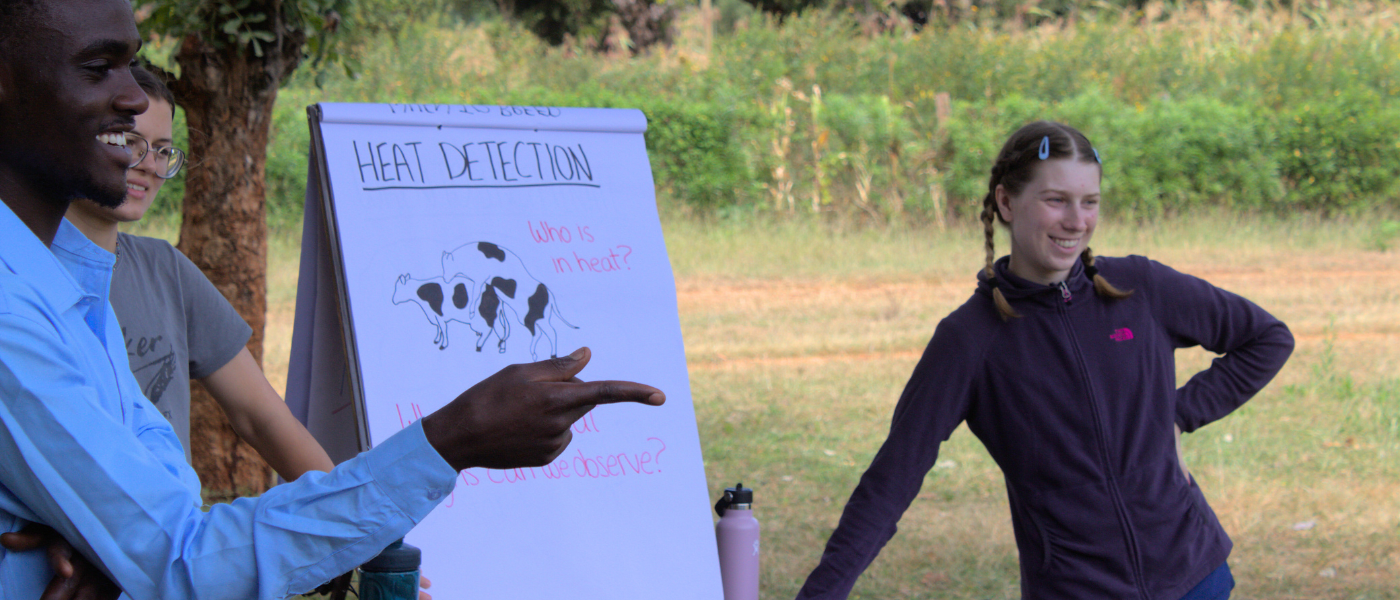 PHOTO: VETS volunteers Grace Friesen (R) and Méli-Jade Léveillé-Blais (2nd from L) lead a farmer training alongside a Meru Dairy extension officer.
PHOTO: VETS volunteers Grace Friesen (R) and Méli-Jade Léveillé-Blais (2nd from L) lead a farmer training alongside a Meru Dairy extension officer.
Tackling Mastitis, One Farm at a Time
Mastitis—the inflammation of the udder—was one of the most common and costly problems we encountered. Many farmers had never heard of early-detection tools like the California Mastitis Test (CMT), and most cases were only identified once they became clinical. With limited access to veterinary care, prevention was critical.
We taught farmers how to spot the signs early, improve hygiene during milking, and maintain cleaner housing environments. I also had the chance to participate in a research initiative with the Kenya Agricultural and Livestock Research Organization (KALRO) to help develop a low-cost mastitis pH test strip—a potential game-changer for smallholder farmers. The goal was to make mastitis testing as simple and affordable as checking the pH of milk, so that every farmer could monitor udder health at home.
A Story of Change: Alice’s Transformation
One of the most memorable farmers I met was Alice Muriuki from Mathagiro village. When we first visited her farm, mastitis was a major issue. But after a few simple changes—cleaning teats before and after milking, using separate towels for each cow, applying teat dip, and keeping bedding dry—everything turned around.
By the end of my placement, Alice proudly told us she had zero mastitis cases. Her milk was no longer being rejected, her cows were healthier, and her confidence had soared. “Now I feel much more knowledgeable and comfortable on my farm,” she said. “If anything happens, I just know where to go, what to do, and how to manage it.”
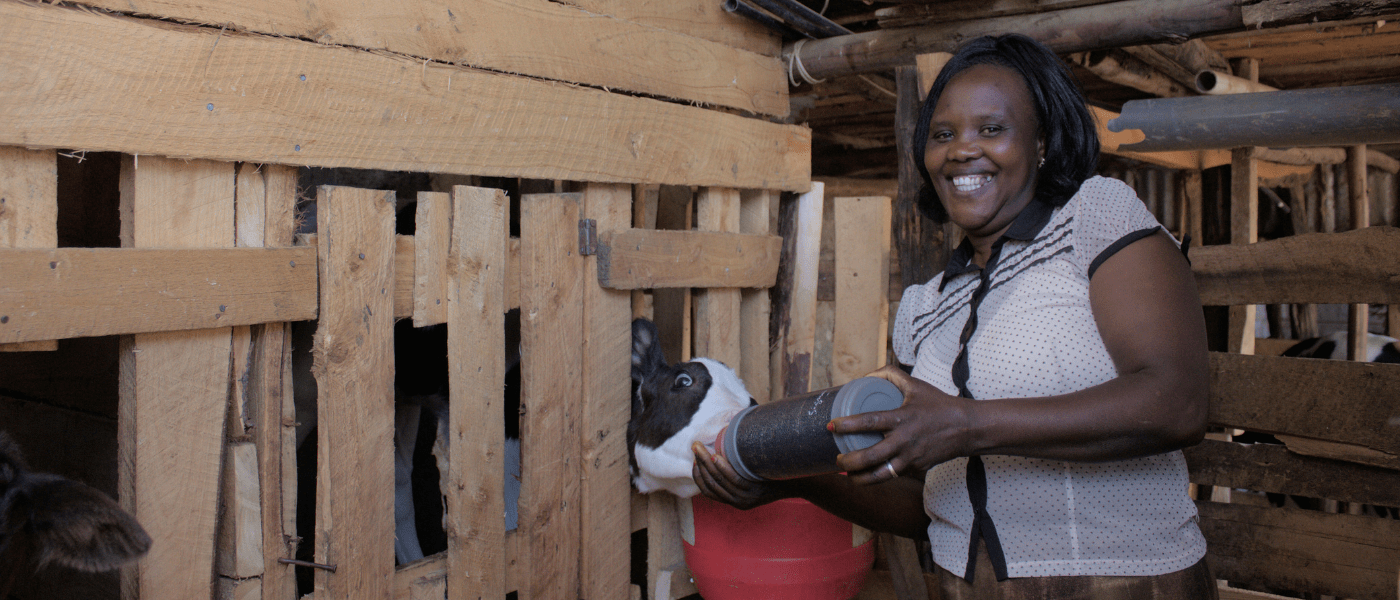 PHOTO: In Mathagiro village, dairy farmer Alice Muriuki smiles as she feeds one of her calves—part of the improved farm practices she adopted after VETS training.
PHOTO: In Mathagiro village, dairy farmer Alice Muriuki smiles as she feeds one of her calves—part of the improved farm practices she adopted after VETS training.
Alice’s progress didn’t stop at her own farm. She began visiting neighbours to share what she’d learned, inspiring others to adopt the same practices. Seeing that ripple effect—the way one farmer’s success can spark change across a whole community—was one of the most rewarding parts of my experience.
Shifting Mindsets: Investing in Calves and Communication
Another key challenge we addressed was calf rearing. Many farmers were under-feeding their calves, not realizing that young stock are the foundation of a productive herd. We demonstrated how to use weight tapes to estimate a calf’s size and calculate proper milk requirements. Once farmers began feeding their calves adequately, they quickly saw improvements in growth and vitality.
We also talked openly about communication and knowledge-sharing within households—especially between men and women. Many families found that by working and learning together, they could make better decisions on the farm. Over time, it became clear that women’s participation wasn’t just about inclusion; it was about improving outcomes for everyone.
I loved watching couples attend trainings side-by-side, discussing feed mixes or comparing notes on their cows. Those moments captured exactly what the VETS program aims to foster: shared learning that strengthens both farms and families.
Lessons in Collaboration
One of my biggest lessons came from recognizing how much stronger our work became when we combined different perspectives. The local extension officers I worked alongside had deep, practical knowledge of the community and years of experience supporting farmers. My role was to listen, learn, and contribute where I could.
Together, we found that sharing ideas—rather than leading from one side—built more trust with farmers and made each training more effective. It reminded me that real change in international development happens through partnership, not direction.
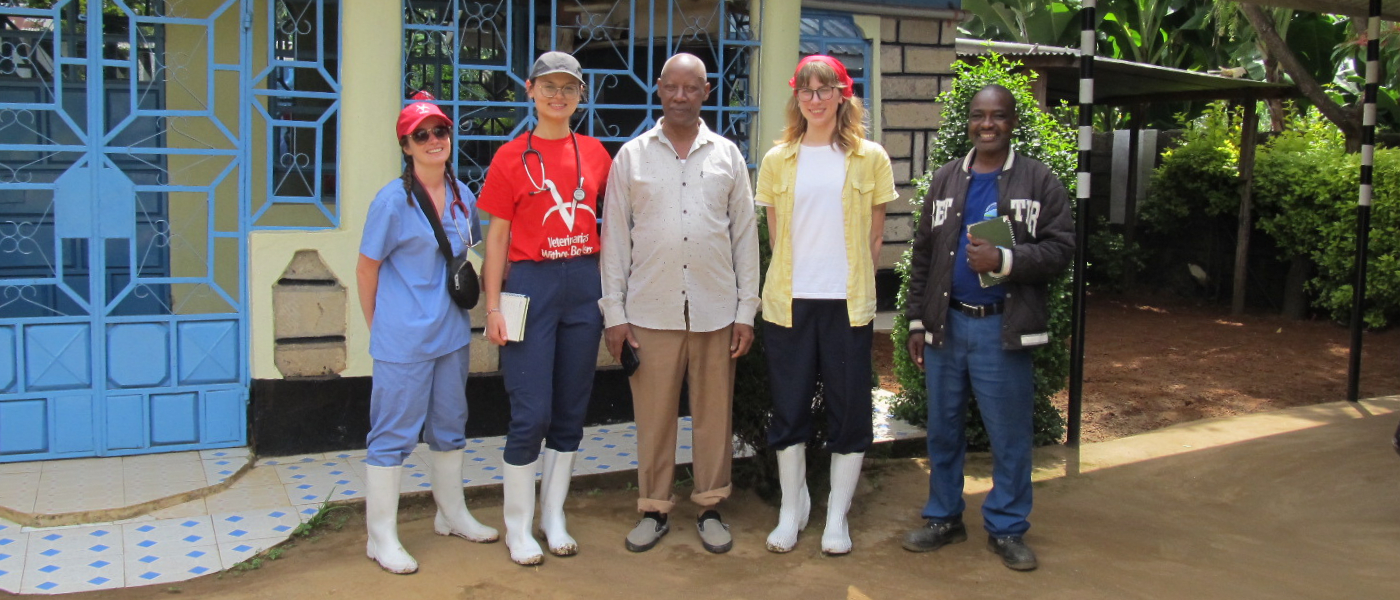 PHOTO: Grace Friesen (2nd from R) joins fellow VETS volunteers, the Meru Dairy Union chairman, and an extension officer before heading out for a day of farmer training and farm visits.
PHOTO: Grace Friesen (2nd from R) joins fellow VETS volunteers, the Meru Dairy Union chairman, and an extension officer before heading out for a day of farmer training and farm visits.
Seeing One Health in Action
Before Kenya, I understood One Health as a concept that connected animal, human, and environmental health. In Meru, I saw it in motion every day. The link between animal welfare, family nutrition, and environmental care was visible everywhere—from farmers recycling manure into biogas for cooking to others using the by-product as fertilizer for their crops. Every improvement in herd health directly improved household well-being.
Smallholder farmers are the heartbeat of rural Kenya. When cows are healthy, families have milk for their children and income for school fees. When pastures are managed sustainably, soil stays fertile, and rivers run cleaner. Seeing those connections in real life transformed the abstract theories I’d learned in university into something tangible and urgent.
Reflections and the Road Ahead
Looking back, this experience completely reshaped how I think about veterinary medicine and international development. I went to Kenya hoping to share knowledge—but I came home with far more than I gave. I learned about resilience, community, and the power of simple changes made with care and consistency.
One of my favorite memories is from a late-afternoon visit when the clouds rolled in over the hills and a farmer handed me a warm cup of chai before showing me her newborn calf. We stood in the doorway of her cowshed, listening to the rain on the tin roof as she told me how proud she was of her growing herd. Moments like that reminded me that connection is at the heart of every success story.
As I continue through veterinary school, I know this won’t be my last experience with VWB. The relationships I built, the lessons I learned, and the people I met have left a lasting imprint on me. I’ll carry those memories—and that sense of purpose—into everything I do next.
VETS is an 8-year initiative (2020-2028) to improve the economic and social well-being of marginalized people, particularly women and girls, in 6 countries across Africa and Asia. In collaboration with local partners, the program is implemented through 190 Canadian volunteers on international assignment and is generously funded by Global Affairs Canada. Learn more.

